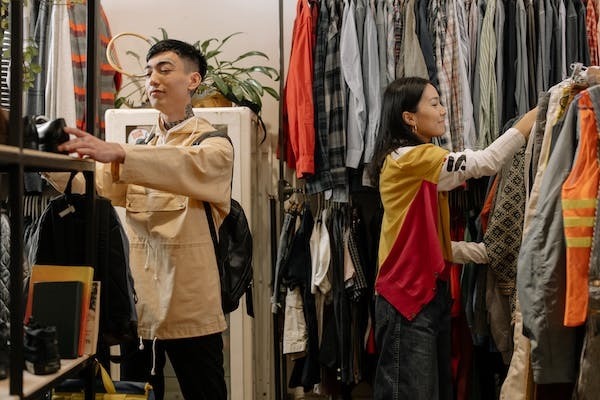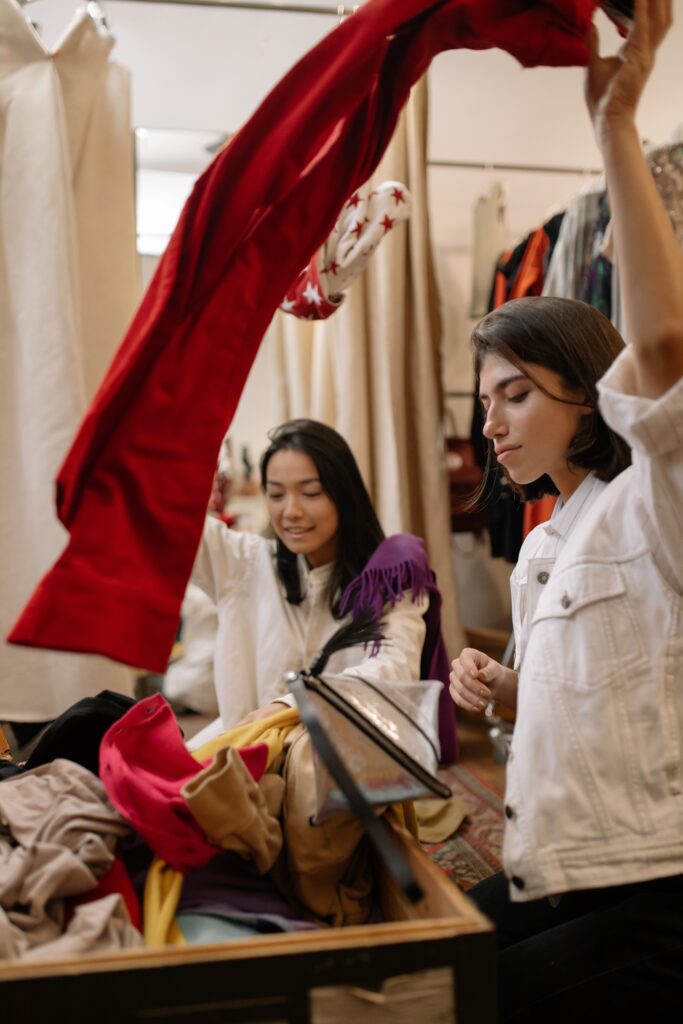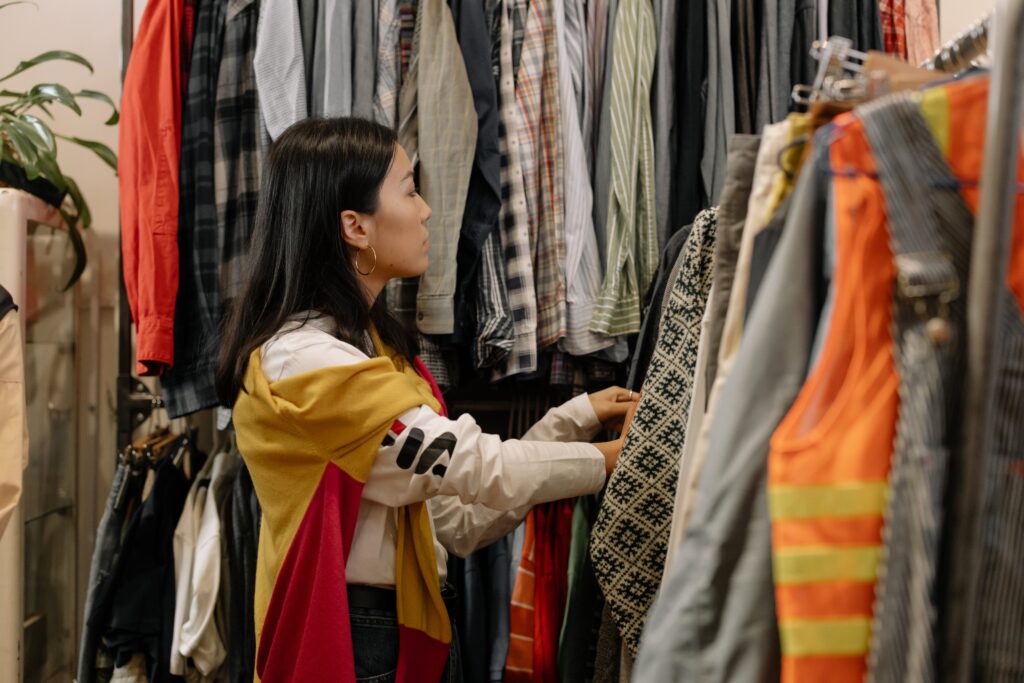Recycling unwanted clothing which is frequently donated, means saving apparel and money for the new owners.
However, on closer scrutiny, clothing reselling is more complicated than one might believe, raising tricky considerations for individuals seeking to do good by donating their old things.
The used clothing industry also harms donor markets.
Every year, consumers in the developed world discard massive amounts of clothing. In the United Kingdom, for example, people yearly dispose of 1.4 million tonnes of clothing in landfills. Charities and local governments have increasingly implemented clothes recycling programs to combat dumping.
The truth is that “fast fashion” is an unsustainable business strategy. Consumers feel that they may continue buying as usual by emphasizing recycling without addressing the core issue. The problem of people obtaining and disposing of larger quantities of lighter, thinner, and less well-made apparel keeps increasing.
Secondhand Clothing and Its Significance in The Present Day
Fashion is defined as an expression that is commonly accepted by a group of individuals throughout time and is marked by a number of marketing features, including limited predictability, high impulse purchase, a shorter life cycle, and strong market demand volatility. More than ever, fashion is defined by how quickly it gets out of style, compelling customers to purchase new clothing in order to feel fashionable. This results in a new industrial trend known as the fast fashion concept, which refers to the idea of reducing lead time and introducing new products to the market as quickly as feasible. The rise of fast fashion is creating a significant increase in the amount of clothing consumed, particularly in the world’s industrialized nations.
Today’s clothes production and consumption are characterized by fast fashion: clothing is designed to be inexpensive, simple, and quick to produce, and to be distributed, marketed, and consumed in ever-increasing quantities. The entire value chain of the contemporary fashion industry is involved in the current ecological crisis, endangering both environmental and human health. The transformation of raw textile fiber into completed fabric and final products is dependent on low-wage labor, air pollution, diminishing water resources, and the usage of hazardous chemicals.
It was noticed that more than half of the population opted to discard their no longer serviceable clothing. Individuals who wished to donate their clothing were unaware of the appropriate methods. A tiny number of young people also preferred to resell their used name-brand items and purchase used clothing. Young people who are environmentally conscious are more inclined to purchase gently used clothing that has been meticulously cleaned and laundered. The number of individuals who shop for used items has increased. There may be something that motivates people to seek out the most environmentally friendly and sustainable things to purchase. The greater awareness of ethical consumption could be a contributing factor. Many indicators imply that a large number of customers hold a favorable view of sustainability. In recent years, there has been an upsurge in interest in and demand for used goods. There are numerous locations where consumers can buy used goods.
Difficulties and Obstacles of the Secondhand Clothes Industry
Increasing Demand Leads To Price Hike
We’re addicted to 90s fashion, giant sweaters, and flood pants. Because it’s more sustainable to locate these products secondhand, medium to higher-class buyers has inflated the price of used items. They are trading these excellent pieces for inexpensive, quick fashion bargains. Because they aren’t selling, these bargains are suddenly flooding the market.
Our “stuff” has been easier and less expensive to produce since the Industrial Revolution. Citizens had relatively little money to spend after WWII, yet the economy needed a boost. The economy required us to buy cash to circulate through the system.
The market has increased cash flow with more money than before, but we still want more things manufactured as quickly and cheaply as possible.
As the middle class grows in size and desires, the secondhand market must keep up by lowering the price of trendy items while raising the price range of quality items and rising competition within luxury markets. That means we’re throwing out more fast fashion things since they can’t withstand the second-hand cycle.
As a result, the secondhand market becomes more selective about which things have a second life, which die on the first round, and which are pushed into the upmarket, luxury second-hand platforms.
Avoiding Customer Disappointment
One of the most experienced difficulties in reselling old things is that you cannot entirely manage the volume of any item or style in your inventory. Aside from approving and rejecting resale items, you have no control over how many of each you can add to your eCommerce site.
Combining this with the rapid turnover of new items means that the customers may be disappointed if the item they want is out of stock.
The issue for resale businesses and marketplaces is to create a journey that swiftly and successfully matches buyers with supplementary things they’ll enjoy, like the proper size. So they’re driven to buy something else rather than bounce.
Product Tags And Descriptions
Resale marketplaces like Zagumi use an unconventional inventory model. One of the most challenging aspects of this strategy is standardizing product descriptions and tags, which is necessary for a uniform discovery experience and in-depth data analysis.
However, without a means to ensure that each post contains the following points, it will be difficult to make relevant recommendations, run promotions, or sell products effectively:
- A set amount of appropriate tags
- A predefined collection of descriptors
- Synonyms for commonly used search terms
- Product descriptions in depth
Renewing Search Experience
Rummaging through mounds and racks of clothing to discover a few great pieces are a quintessential and most fulfilling aspect of the thrifting experience for second-hand shoppers. It has helped some thrift stores establish a reputation for providing the best shopping experience.
With increasing shopping migrating online, fashion resalers are tasked to provide an equally pleasurable online shopping experience. They must devise a means to reproduce the joy and sensory experience through an inspiring internet experience.
Certified Products
Some reselling segments like sneakers are very profitable. Some of the most popular shoe releases sell for 100%-400% more than the retail price on resale markets.
At such a high price range, having a system and process in place to verify things is critical – not only for pricing but also for avoiding enraged customers and harming your brand.
Fixing The Right Price
In many circumstances, calculating prices is linked to authentication. However, except for in-demand sneakers, luxury items, and rare antique pieces, worn items are generally considered depreciated, meaning their resale price should be less than their initial retail price.
It might feel like a subjective decision for many companies, exploring resale and implementing buy-back programs.
Balance Between New And Vintage
Some customers flock secondhand to find hard-to-find vintage things, while others simply want a better value on contemporary items. Brands that resell used stuff must figure out how to mix older items with newer ones.
Actual Condition Of Item
It is especially true for sites where users upload photographs of their choice and for-sale items. Users must take high-quality images from many perspectives, including those that reveal blemishes or damage and appropriately show the condition of used things.
Secondhand Clothes Are a Threat and an Opportunity
The secondhand company has traditionally been a local mom-and-pop business, but technology is altering that. Social media and online advertising have broadened the reach of enterprises that were formerly local. Smartphones have enabled shoppers to photograph, pack, and ship their unwanted clothing, as well as track their clothing’s trip. This has expanded the secondhand store’s catchment region beyond its immediate catchment area.
There is also a societal movement toward secondhand goods. It once had the stigma of being only for the poor. With the word “old” being substituted with “vintage” and accompanied by the trendy value of “genuine,” the stigma associated with secondhand is no longer held by many individuals. Stella McCartney, a renowned fashion designer, stated that she believes “the future of fashion will be circular, restorative, and regenerative by design, and the garments we love will never become garbage.” 13% of active secondhand buyers, defined as those who have spent over $10,000 on secondhand clothing in the past two years, are millionaires. Also, used clothing is more environmentally beneficial because it is the definition of recycled. This is especially appealing to millennial shoppers. 27 percent of all secondhand buyers are driven by environmental considerations. The percentage of millennial consumers is 35%.
Secondhand consumers are not letting up either. In 2012, 11% of their closet contents were secondhand. In 2017, this rate had increased to about 25%. In the following four years, this percentage is anticipated to reach 40 percent.
In the future, when we look back on this period in the history of the fashion industry, people will say that now is when the secondhand market took off. Now is the time for companies that need to be in that sector to enter it.
Conclusion
Living in a digital world where marketing and commercials are hurled at us on every platform, the influence it has on our lives, no matter how “awake” we think we are, will loop us in at some point. The loop exists to make us feel worthy only if we consume, and breaking out requires deep consciousness.
It is crucial to note that numerous arguments imply that second-hand buying isn’t as black and white as it appears. Some people, for example, have been discovered to be exploiting second-used clothing to gain easy access to cheap apparel and more expensive stuff that they would not generally be able to purchase.
As a result, it is said that the used clothing market encourages excessive shopping behaviors. Although the second-hand clothing industry faces challenges and problems, it shows growth potential.




